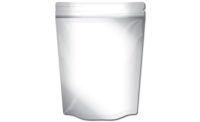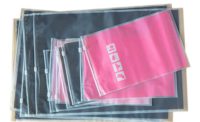Packaging Tech
Incorporating resealable packaging tech takes time

It’s a foregone conclusion consumers embrace the convenience of recloseable and re-sealable packaging. Get the product, take it home, handle it and, using that same package, put the leftovers in the refrigerator or freezer. These things speak to us. As a casual observer and satisfied beneficiary, my impression is the market presence of this bonanza is fairly common; place. However, an expert packaging source reshaped my thinking and perspective.
“First of all there is a low market penetration of zippers and sliders. We see a lot of peelable for processed meats where you peel off the top web of roll stock in some form-fill-seal application. My guess is that the market has something like a twenty percent penetration for this type of package. It’s not recloseable. Easy open is by far the most common type that you see.”
He explains it’s because peelable applications are probably the least difficult to employ in terms of having the right tools and equipment to produce them. That said, he acknowledges that re-sealable packaging is a growing market.
“We’re seeing a lot of interest in the die-cut technology that’s finding its way into processed meats from the snack foods market. To consumers it’s simple and practical. You get the rigid tray, and the lid stock actually has a die-cut that enables it to be easily peeled back. After getting your product from the tray just press down the lid stock to reseal.”
This straightforward solution is most commonly seen with sliced deli meats, lunch snacks and other dry meats.
So why isn’t it everywhere? The reality is that packaging equipment constraints and processes are more powerful drivers of convenience packaging than the consumers who vote with their wallets for products using them.
“It’s hard and expensive for large processors to retool their technologies. It’s going to take a while because the upfront investment is high. They’ll get there eventually, but they’re heavily invested in equipment to produce another type of package.”
In truth, these packages may be destined to stay within the higher end of the market with all of the grab-and-go lunch snacks and others that deliver premium prices and higher margins. Retailers play a role in this, too.
“It’s one thing to make these packages that look great and convenient, and they are. But if we don’t make it easy for the supermarket chains to handle them — and make sure they fit within their needs, logistics and supply chain — then the sales won’t be driven as well.”
It boils down to the capabilities of the packaging manufacturers and how they can implement the technologies devised by closure and sealing technology producers. Each of them requires a capital investment. Consequently, consumers don’t immediately get the package formats that may be most appealing to them. They come, but only when that conversion maximizes the financial benefits and minimizes the downsides. That’s just good business. NP
Looking for a reprint of this article?
From high-res PDFs to custom plaques, order your copy today!









